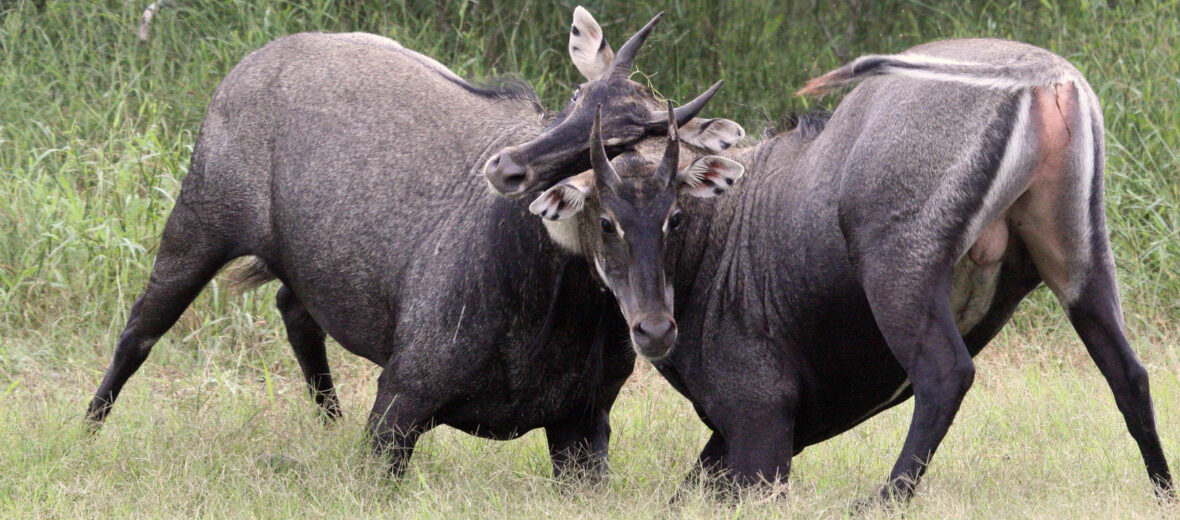
The nilgai, aka blue bull, is a local resident of India, Nepal, and even Pakistan. Due to being introduced, they can also be found in Alabama, Texas, and Mexico. They like grassland areas, woodland areas, plains, shrublands, and low hills. Nilgai are the largest antelope native to Asia. And, as a result of the escaped and now wild populations, they are the largest antelope in North America. Due to their stable numbers and distribution, these critters are listed as Least Concern by the IUCN.
First the Stats…
Scientific name: Boselaphus tragocamelus
Weight: Up to 700 lbs.
Length: Up to 6.56 feet
Height: Up to 4.9 feet, at the shoulder
Lifespan: Up to 21 years
Now on to the Facts!
1.) Nilgai are diurnal (active during the day).
2.) These social animals can gather into herds of up to 70 animals, but usually only gather into groups of up to 10.
3.) If threatened, they will flee up to 2,300 feet away, rather than just freeze or seek shelter.
4.) Short, guttural grunts are made when they are alarmed. Females make clicking noises when nursing their young.
5.) Calves can make a brief coughing roar that can be heard up to 1,600 feet away.
But wait, there’s more on the nilgai!
6.) Only males have horns and they are only up to 10 inches long.
7.) Males and females can be aggressive towards each other, at times. Fights can break out, especially between males, when vying for a female. Deaths can even sometimes occur.
Did you know…?
Nilgai tend to have a common or communal toilet area. Defecating in one main area. This pile of dung can measure up to 9.8 feet in diameter!
8.) These herbivores (eat plant matter) graze on grasses, buds, leaves, fruits, seeds, flowers, and stems.
9.) Getting most of the water from the vegetation they consume, nilgai seldom drink standing water.
10.) Their primary predators are tigers, leopards, hyenas, wolves, feral dogs, and lions.
But wait, there’s still more on the nilgai!
11.) Females birth up to 2 calves after up to a 9 month gestation (pregnancy).
12.) Calves are born precocial (predominantly fully self sufficient at birth). They are able to stand and walk just 40 minutes after birth and are foraging in just 4 weeks.
Did you know…?
Their name comes from the Hindi words nil meaning “blue” and gai meaning “cow”.
13.) The calves are weened at 10 months and males, at that time, leave their mothers to join a bachelor herd.
14.) Harems are not formed. Rather, the males will wander around looking for females who are ready to breed.
15.) They also go by the names nilgo, nylghau, neelghae, nilgau, nylghai, and white-footed antelope.
16.) Due to a lack of fat reserves, these antelopes don’t fair well in frigid weather.
17.) Hindus revere the nilgai as sacred, like the cow.
18.) The Bishnois tribe will care for nilgai, among other animals.
Now a Short Nilgai Video!
Be sure to share & comment below! Also, check out the Critter Science YouTube channel. Videos added frequently!
Want to suggest a critter for me to write about? Let me know here.




Leave a Reply